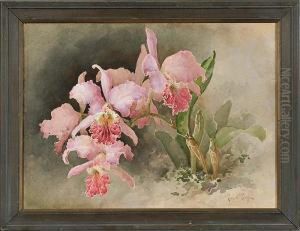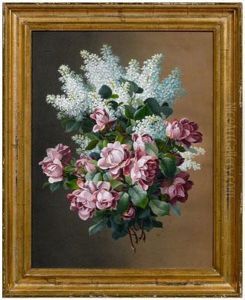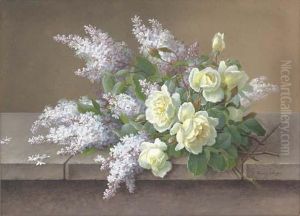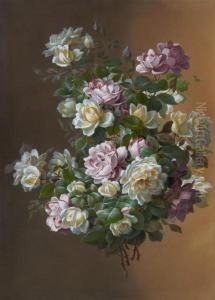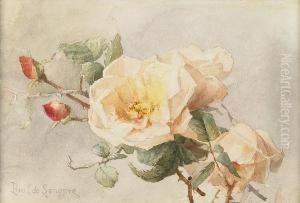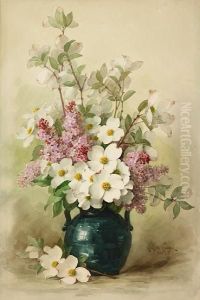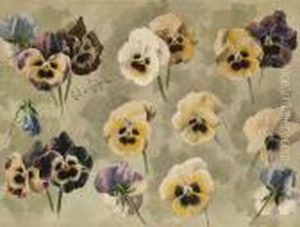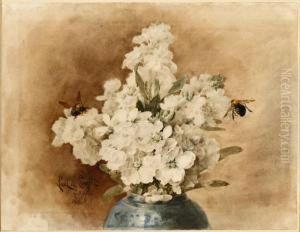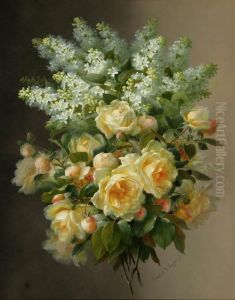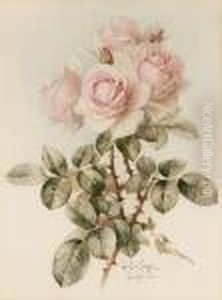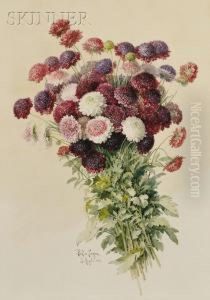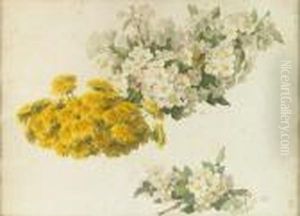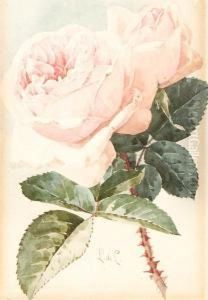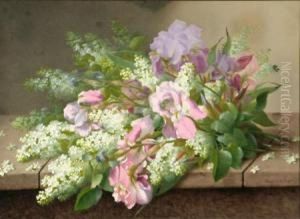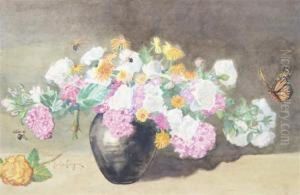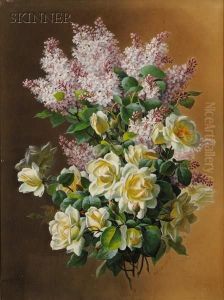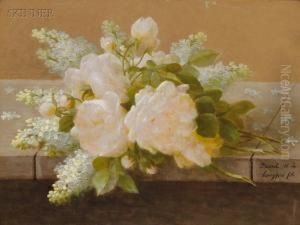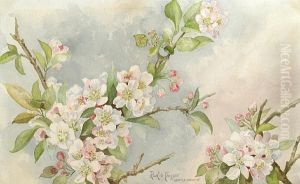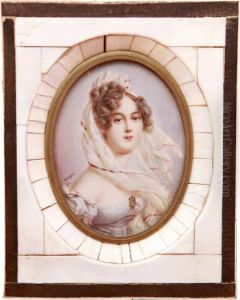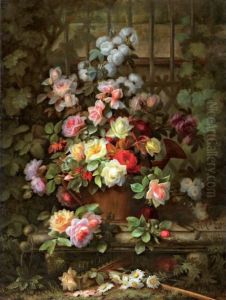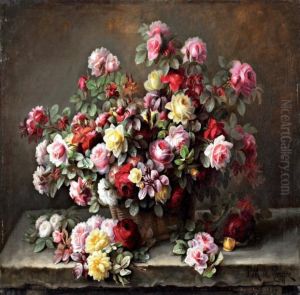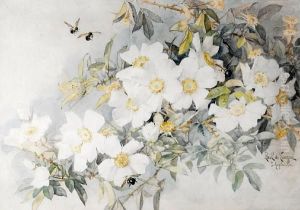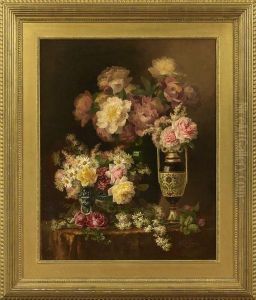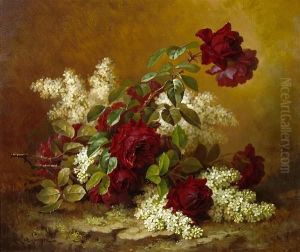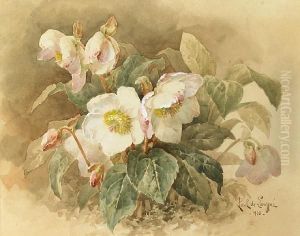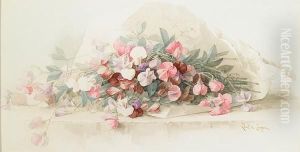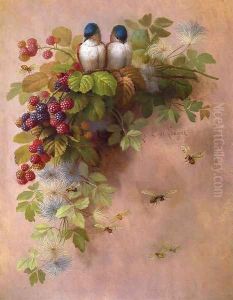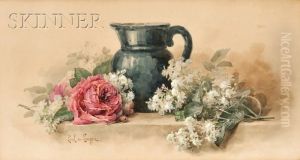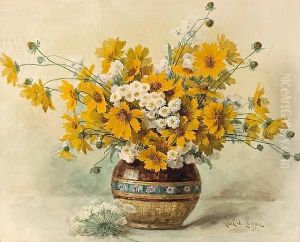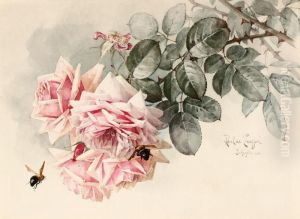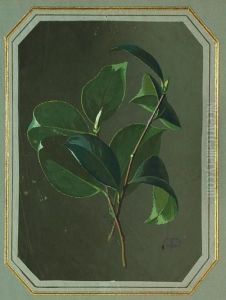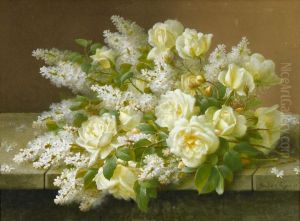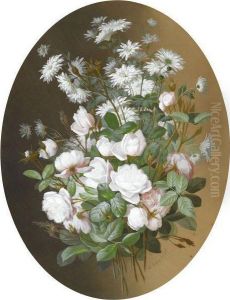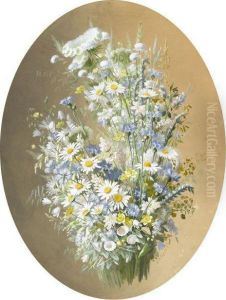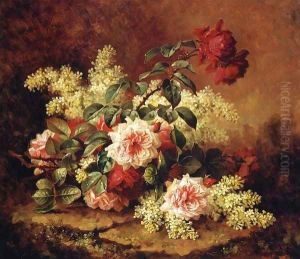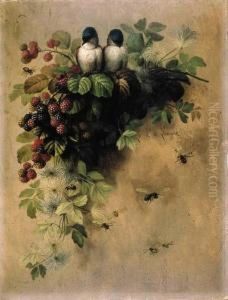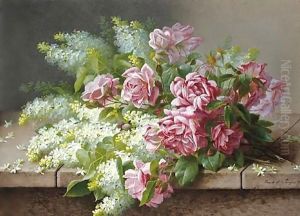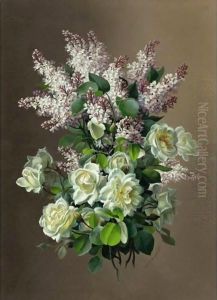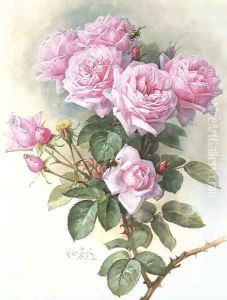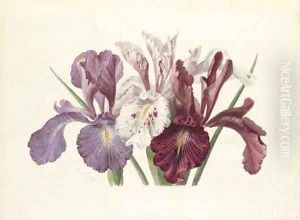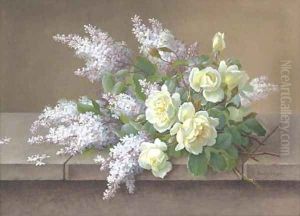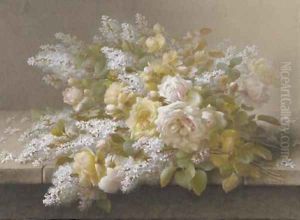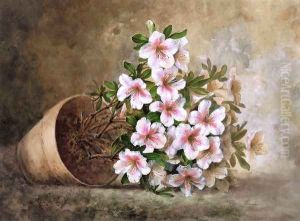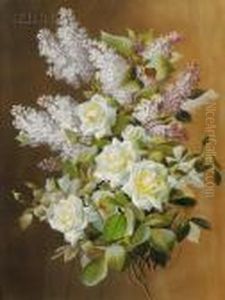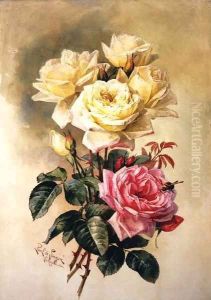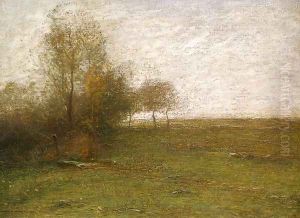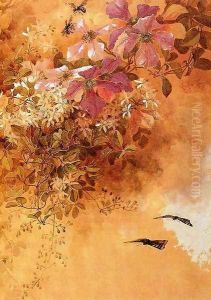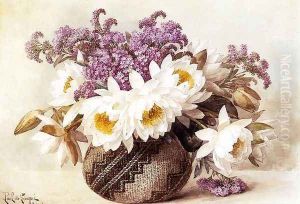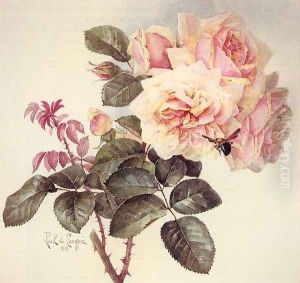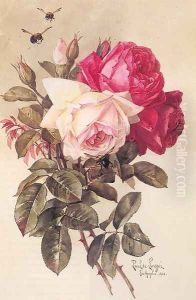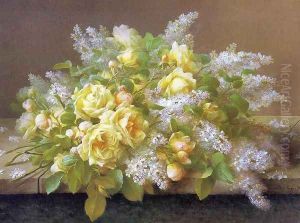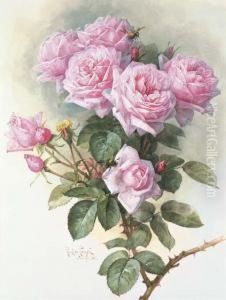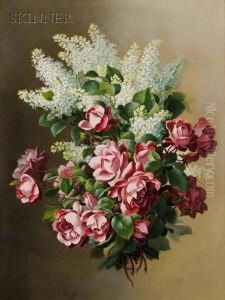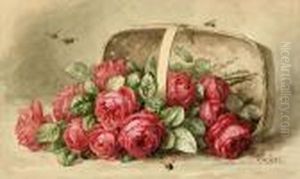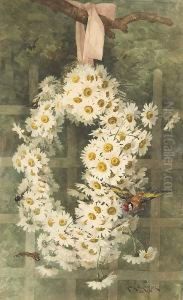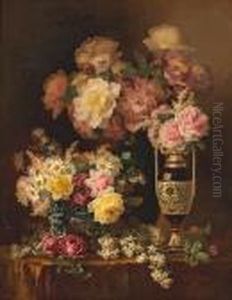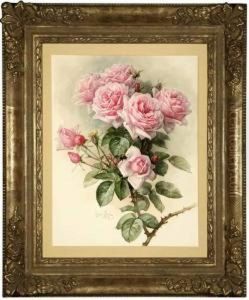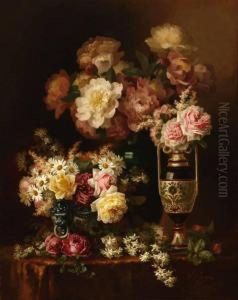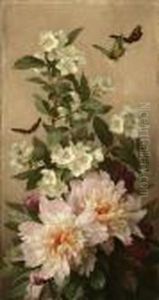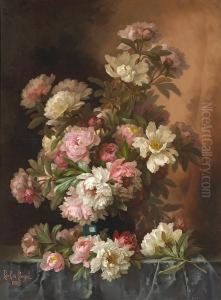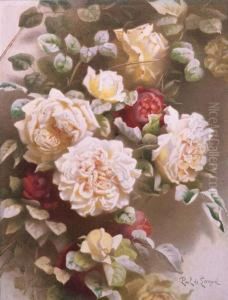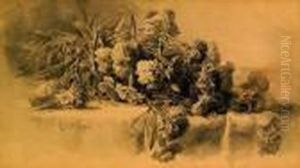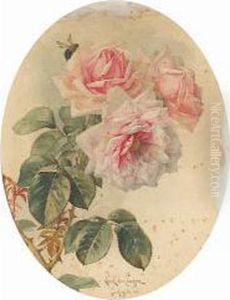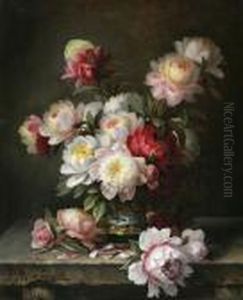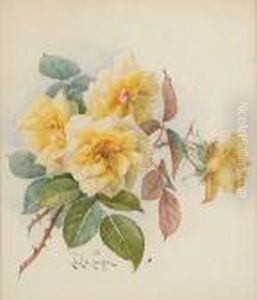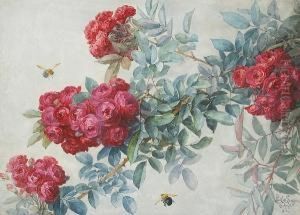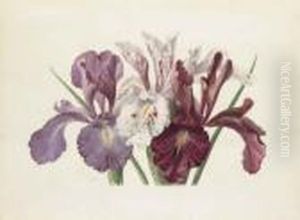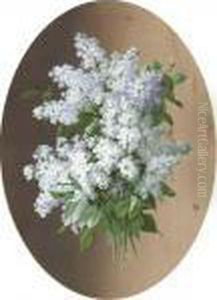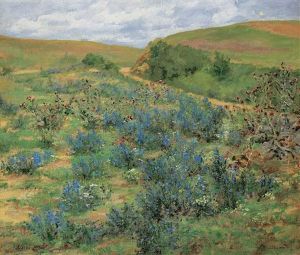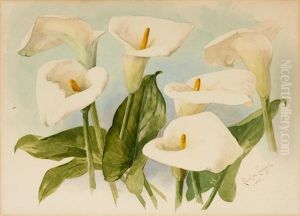Paul De Longpre Paintings
Paul de Longpré was a French painter known for his remarkable floral paintings, which gained significant popularity in the United States, especially during the late 19th and early 20th centuries. Born on April 18, 1855, in Lyon, France, de Longpré showed an early talent for art. Despite his family's financial struggles and the early death of his father, he managed to find success as a self-taught artist.
De Longpré's artistic focus was primarily on floral subjects, and he was particularly skilled at capturing the delicate beauty of roses, earning him the nickname 'The King of Flowers.' His style was characterized by a detailed and realistic portrayal of his subjects, which resonated well with the art audiences of his time.
In 1890, after achieving a degree of success in France, de Longpré moved to the United States, initially to New York City. However, it was his move to California that solidified his reputation as a prominent artist. He settled in Hollywood, which at that time was a small community prior to its fame as the center of the film industry. There, he built an impressive Moorish-style villa, which also featured a vast garden with over 4,000 rose bushes. This garden became a significant attraction, drawing tourists and art lovers alike, and it served as a direct inspiration for many of his works.
De Longpré's art was widely disseminated through various means. In addition to selling his original paintings, he also made his work accessible to the public through mass-produced prints, postcards, and advertising illustrations. This marketing savvy not only expanded his audience but also helped to secure his financial success.
Despite his success, Paul de Longpré faced challenges in his personal life, including the loss of his home and garden due to financial difficulties. Nonetheless, he continued to paint and exhibit his work until his health began to deteriorate. De Longpré died on June 29, 1911, in Los Angeles, California. His legacy endures through his contributions to American art, particularly in the genre of floral painting, and his influence is still appreciated by art historians and enthusiasts today.
